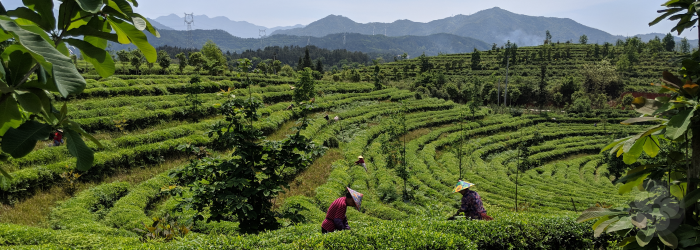Types of Green Tea: The Importance of Harvest Date

Green tea is among the most popular style worldwide, but the huge variety in green teas can be overwhelming. Though the crafting steps of green tea are typically minimal, and the style is narrowly defined by the lack of oxidation, the range in green tea flavor can be enormous, even before considering scented and flavored varieties. To narrow down the options to more a more specific selection of flavor profiles, we recommend asking about harvest date.
Harvest date is the primary criteria for grading traditional Chinese green teas, with the first leaves picked during the year fetching the highest prices. But the most expensive tea is not always best for every palate, and exceptions exist to every rule. So how exactly does harvest date contribute to quality? And what factors can change the impact of traditional harvest dates?
Early Spring
Green teas picked before the Qing Ming Festival (sometimes called Tomb-Sweeping Day) on April 5th are referred to as Ming Qian, and are among the most prized green teas in China. With harvests typically beginning in mid-March, these early spring green teas are made up of the first leaf buds to sprout after the dormant winter season.
Thanks to relatively cold temperatures, these buds grow slowly, fueled by glucose stored in the root system during the winter. The small, budding leaves picked during these few weeks contain the most natural sugars, and the smallest amount of astringent tannins. We often compare them to baby salad greens such as arugula or spinach, which are always sweeter and more tender than the mature leaves of the same plant.
Learn how to use brewed spring leaves in salads and stir fry >>
These spring buds come in a limited quantity, however. Slow growth also limits crop yields, making the prices for these teas high. Teas from famed regions, in particular, are often sold before they are picked by connoisseurs eager for the freshest leaves.
Late Spring
After April 5th, the next benchmark on the traditional Chinese calendar is the beginning of Gu Yu, one of 24 solar terms that mark seasonal changes in weather. Gu Yu, in particular, is the period when spring rains are expected. Teas picked after Qing Ming on April 5th, and before the beginning of Gu Yu around April 20th, are referred to as Pre-Rain. This portion of the harvest season is critical, since the coming rain will delay harvests and increase growth rates.
During the Pre-Rain period, new growth abounds as the weather starts to warm. Most green teas picked during this period will still contain a majority of leaf buds, but the harvested buds will be larger, and are usually accompanied by the second leaf on the stem.
These slightly more mature buds can be ideal for drinkers new to spring green teas, since they strike a good balance between flavor and price. Flavor profiles are bolder than earlier harvests, without the harsh bite that can come from fully matured leaves, while increased yields mean more affordable prices.
Summer
During the long, hot days of summer, green tea plants undergo their most rapid season of growth. Leaves mature and unfold, photosynthesizing sunlight into extra glucose and sending it down to the root system to be stored for the harsh seasons to come. Meanwhile, the plant defends against the multitude of leaf-eating insects by producing tannins that give these mature leaves an astringent bite.
This is the most productive harvest season, when leaves are growing larger and crop yields are highest. Thus, teas harvested during the summer are the least expensive, and most consistent over a large quantity, making them perfect for large companies to pack into identical tea bags. Strong flavors also make them ideal base teas for flavored or scented styles, which take the focus off any natural bitterness with floral aromas and fruit flavors.
Exceptions
While these rules hold true for the majority of traditional green teas, there are a few aspects of terroir that can change the expected calendar range of these seasonal stages. High elevation tea farms, for instance, where cold weather lasts longer, may produce teas with early spring flavor at later harvest dates. Meanwhile, tea farms closer to the equator may not fit this model at all. If the weather never gets cold enough to send the tea plants into their dormant winter state, the tea plant will grow at maximum capacity all year long, and never produce the higher grades typically seen in spring.
Moreover, the volatility of weather patterns that has emerged with climate change can affect green tea harvest dates in all regions. A cold spring may delay the harvest dates of the highest grades, while early rains can lower the flavor quality of teas picked at any time in the spring. Ultimately, harvest dates are only a guide to help narrow the range of flavor profiles, not a definitive guide to objective quality. Remember to consider provenance, variety, and crafting style as well to get a more complete idea of the flavors you can expect.
Which is your favorite green tea harvest season? Let us know in the comments below.
Sign up for our newsletter to get blog updates in your inbox!







Comments on this post (0)